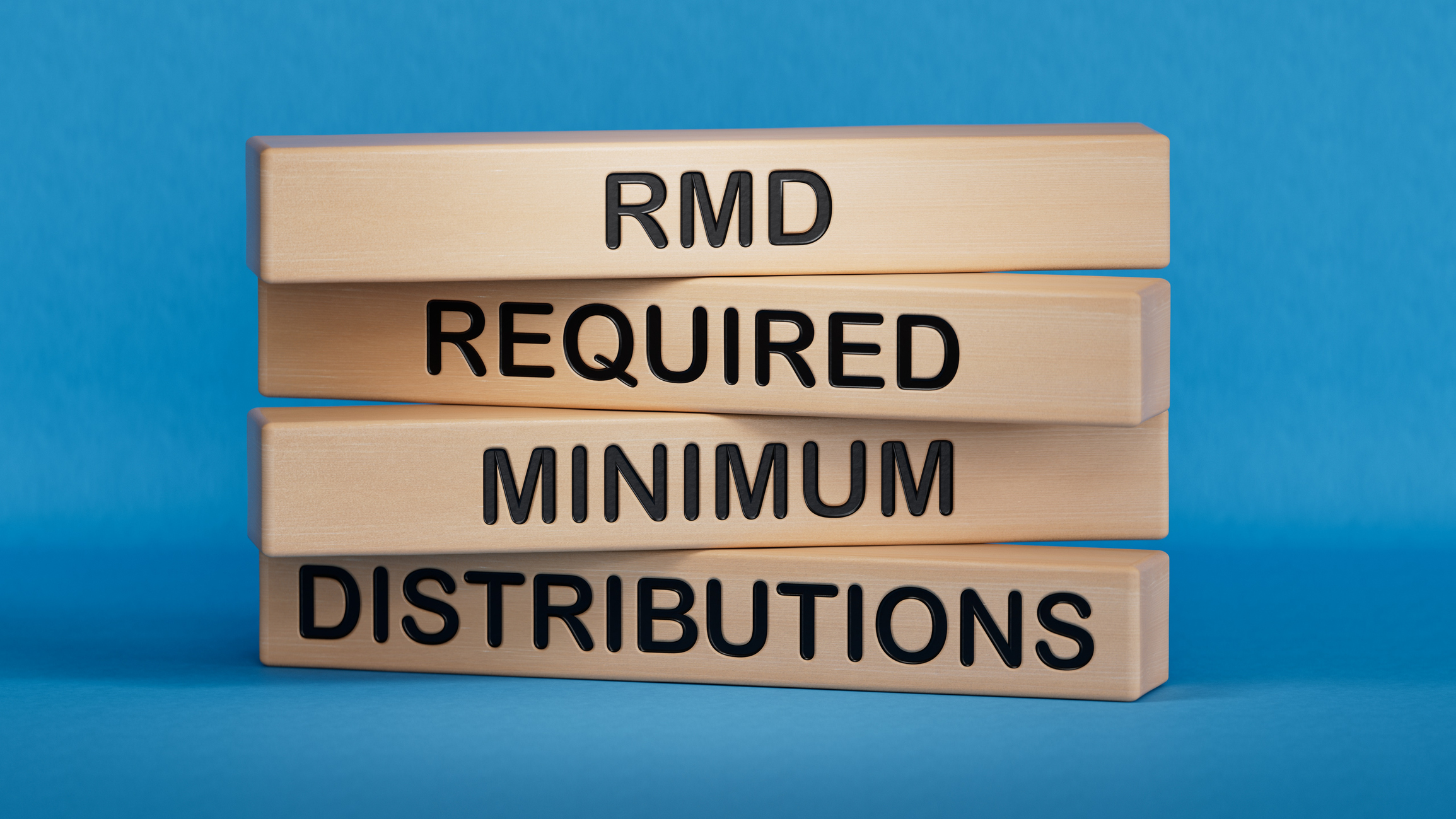6 Tax Reasons to Convert Your IRA to a Roth (and When You Shouldn't)
Here’s how converting your traditional retirement account to a Roth IRA can boost your nest egg — but avoid these costly scenarios.


If you have an individual retirement account (IRA), you may have considered converting it into a Roth account at some point. But you might not know the best time to do a conversion, or even if doing so would benefit you.
The immediate tax trade-off from an IRA to a Roth is relatively clear: With a traditional retirement account, you pay taxes when you take a distribution; with a Roth, you pay taxes now on the funds you contribute.
Converting to a Roth means you must pay the income tax on contributions in the year of conversion. Still, the potential tax benefits could be worth the upfront cost, especially if one of the following scenarios applies to you.
From just $107.88 $24.99 for Kiplinger Personal Finance
Be a smarter, better informed investor.

Sign up for Kiplinger’s Free Newsletters
Profit and prosper with the best of expert advice on investing, taxes, retirement, personal finance and more - straight to your e-mail.
Profit and prosper with the best of expert advice - straight to your e-mail.
Here are six tax reasons you may convert your IRA to a Roth — and when you probably shouldn’t.
Roth IRA Tax Benefits

Roth IRAs offer tax-free growth compared to traditional 401(k)s and other types of retirement accounts.
1. Get tax-free growth and withdrawals in retirement with a Roth
One major reason to convert your traditional IRA or 401(k) into a Roth is for tax-free growth. Because taxes are paid on your conversion upfront, all future qualified distributions are withdrawn tax-free, leading to significant trickle-down benefits.
- For example, once you reach age 65, you may have to pay Medicare’s income-related monthly adjustment amount (IRMAA). This amount is based on your modified adjusted gross income (MAGI). Because tax-free Roth earnings are excluded from your MAGI, you may avoid higher Medicare premiums on your retirement income.
- Other taxes, like those on capital gains and the net investment income tax (NIIT), depend on your MAGI in the year of withdrawal. By withdrawing future earnings tax-free with a Roth, you may indirectly minimize or even avoid these taxes altogether.
Timing your Roth conversion is also important for maximizing tax-free growth. For example, you can convert to a Roth when the market is down and your IRA balance is temporarily low. This allows you to pay the tax on a smaller valuation, so when the market inevitably rebounds, your tax-free earnings may more easily recoup your upfront conversion tax bill (more later on conversion timings).

Roth accounts generally allow you to control when and how much you withdraw in your retirement.
2. Set up flexible retirement income with Roths
Roth conversions from a traditional IRA account may also be ideal for those who want the final say in how they spend their retirement savings account income.
With a traditional IRA, Uncle Sam dictates when and how much you need to withdraw from your retirement account every year.
With a Roth, you’re not forced to take out a certain distribution during specific years, meaning you can freely avoid late-withdrawal penalties and flex your retirement account savings.
However, before your Roth IRA earnings become entirely tax-free and penalty-free, you must meet two requirements for a qualified withdrawal:
- The 5-year rule. Your Roth IRA must have been open for at least five full years.
- The age or life event rule. You must be at least 59 ½ years old, OR the withdrawal must be due to disability, a first-time home purchase (up to $10,000), or death.
If you withdraw the earnings before you meet the rules above, that money could be subject to both income tax and a 10% early withdrawal penalty. But by flexing your retirement IRA distributions, you can make strategic withdrawals and help manage your taxable income, even lowering your federal tax bracket altogether.
Roth Conversion Timing

Extend your retirement wealth by converting to a Roth IRA if you expect to live longer.
3. Take advantage of a low tax bracket with Roth accounts
The final months of the year are often the most popular time to execute a Roth conversion. Why? By late fall, most taxpayers have a firm grasp of their projected taxable income and, consequently, their federal tax bracket.
If you expect this bracket to be lower than the one you'll be in future years, converting your IRA to a Roth now could be advantageous. This strategic move allows you to lock in a lower tax rate and significantly reduce your immediate tax bill on the conversion.
So if you are fortunate enough to have a lower tax bracket in 2025 than you anticipate in the future, here are the specific times and scenarios when converting your traditional IRA into a Roth might make sense:
- You’re not close to retirement. If retirement age is still 10 or more years away (and you expect to earn more in retirement), now might be a good time to convert your IRA to a Roth, so you can maximize your tax-free growth.
- You expect to live longer. Do you know any relatives in your family who have reached their 90s and are still in good health? RMDs on traditional IRAs are calculated based on life expectancy tables, which might not fit your family’s expected lifespan. A Roth account offers lifetime tax-free savings, potentially providing a cushion of funds for many years to come.
- You’re retired and recently transitioned from married filing jointly to a single filer. Single filers generally have a lower income threshold for paying Medicare surcharges, making them susceptible to higher tax bills in the future. By converting to a Roth account, you can potentially avoid those higher tax brackets by preventing the Medicare surcharges on IRA distributions.
Of course, the most “ideal” time to convert to a Roth depends on a case-by-case basis, so you’ll want to consult a qualified tax professional before the conversion to see if it’s right for you.

RMDs are typically not required for Roth IRAs, which is another tax benefit of performing a conversion.
4. Avoid RMD taxes with a Roth IRA
Retirees are likely already familiar with the concept of a required minimum distribution (RMD). But if you’re new to the retirement game, here’s the scoop:
- RMDs are money that must be withdrawn from your 401(k), 403(b), or traditional IRA every year after you reach a certain age (right now, that’s likely age 73).*
- Failure to make the withdrawal typically results in a 25% penalty on the amount not distributed.
RMDs can increase your taxable retirement income in a variety of ways. For instance, they can raise the taxable portion of your Social Security benefits by increasing your provisional income or pushing your taxable income into a higher federal tax bracket.
A key advantage of converting to a Roth IRA is the lack of RMDs during the original owner’s lifetime.
Because Roth accounts typically don’t have RMDs, you may be able to avoid taking distributions from your Roth during years of high taxable income, while withdrawing more funds tax-free during low-tax years. This is particularly ideal for high-earners who anticipate higher tax rates in the future.
*Note: If you are 73 or older at the time of the conversion, you must first take your RMD from your traditional IRA in the year of the switch.
Retirement and Estate Planning for Roths

Your estate planning goals may factor in a Roth account conversion in 2025.
5. Start a Roth IRA after you retire to avoid future high tax rates
If you’re newly retired, now may be the optimal time to convert your 401(k), 403(b), or other traditional IRA into a Roth. That’s because your tax bracket may be lower than it has been while you were working, and you’re not yet taking Social Security or are required to take an RMD (which can push you into a higher tax bracket).
This retirement “sweet spot” is when federal tax rates are at their lowest, which may help create a couple of ideal scenarios for a Roth conversion:
- For instance, if your pension or annuity hasn’t kicked in yet, now might be a great time to convert your traditional IRA or 401(k) while taxable income is low.
- Or, if you plan on receiving a large lump sum from an employee stock ownership plan (ESOP) or other retirement investment, converting to a Roth now could save you future taxes when your taxable income is higher.
As reported by Kiplinger, some financial planners also speculate that the changes made in the Trump/GOP 2025 tax and spending bill have placed taxpayers in “one of the lowest-income-tax environments in history.” If that applies to you, consider converting now to a Roth before future tax rates potentially increase.
For more information, check out Kiplinger’s report on Timing Roth Conversions.

Roth distributions to heirs are normally income tax-free if certain requirements are met.
6. Give tax-free assets as inheritance to your kids with a Roth
Withdrawals from a traditional IRA or 401(k) are always taxable, no matter who’s taking the funds. Unfortunately, that means your kids could pay the price if you leave them your IRA.
That’s where another tax advantage of converting your IRA into a Roth comes in handy: Your heirs could inherit those funds income tax-free.
Not only that, but inherited Roth earnings continue to grow tax-free, meaning your heirs have more flexibility on when to withdraw.
However, your non-spouse heirs generally have to withdraw all funds from an inherited Roth within 10 years of your death (this also applies to traditional IRAs and is commonly referred to as the “10-year rule”). Once more, inherited Roth IRAs have RMDs for some heirs (like children), though spouses who inherit a Roth may not be subject to RMD rules.
For more information on the 10-year rule and inherited Roth accounts, check out Kiplinger’s report, Inherited an IRA? Key Distribution Rules to Know for 2025.

Retirement planning is more than just a Roth IRA, so consider all factors before committing to a conversion.
When you shouldn’t convert to a Roth
Although we covered six tax reasons for converting your IRA to a Roth, there are times when a Roth conversion can be financially detrimental. Here are a few scenarios when you wouldn’t convert a traditional IRA to a Roth.
- You expect your 2026 income tax rate (or later) to be lower (or the same). If you think your future federal tax rate will be lower than your current rate, you may not want to convert a traditional IRA to a Roth, as doing so would mean paying higher tax rates later.
- You have to use IRA funds just to pay the conversion tax bill. Since the Roth conversion tax is due upfront, you must pay it immediately. If you are forced to use the IRA funds themselves to cover the tax bill, that withdrawal becomes taxable and could trigger an early withdrawal penalty (if you are under 59 ½). This may significantly diminish your retirement savings and undercut the primary benefit of the Roth: Tax-free growth.
- You need to use the converted funds within five years. If you’re under 59 ½, you can’t use your funds for five years after a traditional IRA to Roth conversion. Otherwise, you could be subject to a 10% early withdrawal penalty. (Yet if you’re older than 59 ½, you may withdraw the funds penalty-free before the five years are completed, though any earnings on those funds will be subject to income tax.)
- You’re retiring soon. If you’re retiring within the next five years, your Roth account will not have a lot of time to grow tax-free, so you might not want to convert your IRA into a Roth. Otherwise, your upfront conversion tax bill may never be recouped.
Deciding if and when to convert your traditional IRA to a Roth account should be part of a comprehensive tax strategy that considers your various income streams and retirement time horizon.
For example, converting to a Roth may seem like a good idea for generating tax-free growth, but the increase to your taxable income in the year of conversion could have ripple effects. Higher taxable income may preclude you from claiming tax breaks that you’re eligible for, like the tip tax deduction or $6,000 bonus deduction for older adults.
Plus, you don’t have to make an IRA to Roth conversion all at once. You can decide to minimize the impact of your conversion taxes by spreading out a Roth conversion gradually, if at all.
Ultimately, Roth conversions are irreversible: So exercise caution. Once you’ve made one, you’re stuck with the upfront tax bill and the Roth account for a lifetime.
Read More
Profit and prosper with the best of Kiplinger's advice on investing, taxes, retirement, personal finance and much more. Delivered daily. Enter your email in the box and click Sign Me Up.

Kate is a CPA with experience in audit and technology. As a Tax Writer at Kiplinger, Kate believes that tax and finance news should meet people where they are today, across cultural, educational, and disciplinary backgrounds.
-
 Capital Gains Tax Quiz: How Well Do You Know IRS Rules for Gains and Losses?
Capital Gains Tax Quiz: How Well Do You Know IRS Rules for Gains and Losses?Quiz Take our capital gains tax quiz to test your investment taxes knowledge. Learn about loss rules, holding periods, and tax incentives that could impact your savings.
-
 The Delayed September Jobs Report Is Out. Here's What It Means for the Fed
The Delayed September Jobs Report Is Out. Here's What It Means for the FedThe September jobs report came in much higher than expected, lowering expectations for a December rate cut.
-
 Capital Gains Tax Quiz: How Well Do You Know IRS Rules for Gains and Losses?
Capital Gains Tax Quiz: How Well Do You Know IRS Rules for Gains and Losses?Quiz Take our capital gains tax quiz to test your investment taxes knowledge. Learn about loss rules, holding periods, and tax incentives that could impact your savings.
-
 Could Tax Savings Make a 50-Year Mortgage Worth It?
Could Tax Savings Make a 50-Year Mortgage Worth It?Buying a Home The 50-year mortgage proposal by Trump aims to address the housing affordability crisis with lower monthly mortgage payments. But what does that mean for your taxes?
-
 3 Ways High-Income Earners Can Maximize Their Charitable Donations in 2025
3 Ways High-Income Earners Can Maximize Their Charitable Donations in 2025Tax Deductions New charitable giving tax rules will soon lower your deduction for donations to charity — here’s what you should do now.
-
 Another State Bans Capital Gains Taxes: Will More Follow in 2026?
Another State Bans Capital Gains Taxes: Will More Follow in 2026?Capital Gains A constitutional amendment blocking future taxes on realized and unrealized capital could raise interesting questions for other states.
-
 An HSA Sounds Great for Taxes: Here’s Why It Might Not Be Right for You
An HSA Sounds Great for Taxes: Here’s Why It Might Not Be Right for YouHealth Savings Even with the promise of ‘triple tax benefits,’ a health savings account might not be the best health plan option for everyone.
-
 Emergency Tax Bill Ends $6,000 Senior Deduction and Tip, Overtime Tax Breaks in D.C.
Emergency Tax Bill Ends $6,000 Senior Deduction and Tip, Overtime Tax Breaks in D.C.Tax Law Here’s how state tax conformity rules could immediately raise your income tax liability.
-
 New RMD Rules: Can You Pass This Retirement Distributions Tax Quiz?
New RMD Rules: Can You Pass This Retirement Distributions Tax Quiz?Quiz Take our RMD quiz to test your retirement tax knowledge. Learn about RMD rules, IRS deadlines, and tax penalties that could shrink your savings.
-
 10 Retirement Tax Plan Moves to Make Before December 31
10 Retirement Tax Plan Moves to Make Before December 31Retirement Taxes Proactively reviewing your health coverage, RMDs and IRAs can lower retirement taxes in 2025 and 2026. Here’s how.